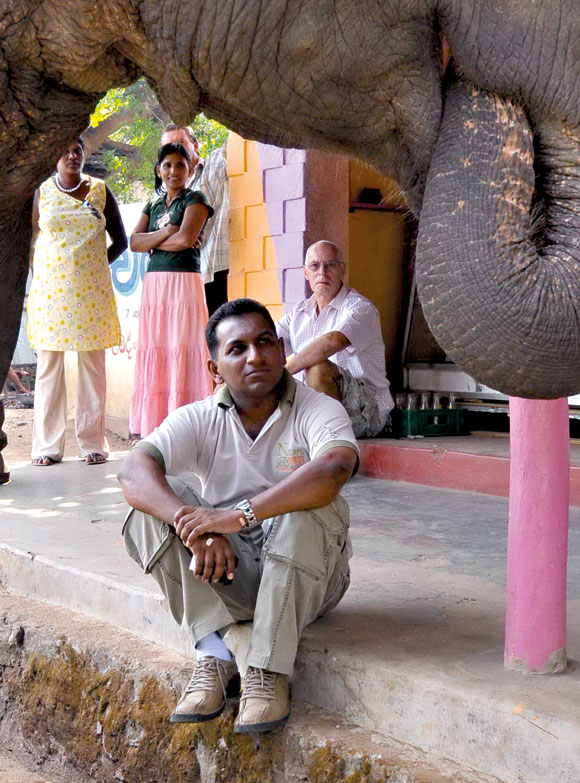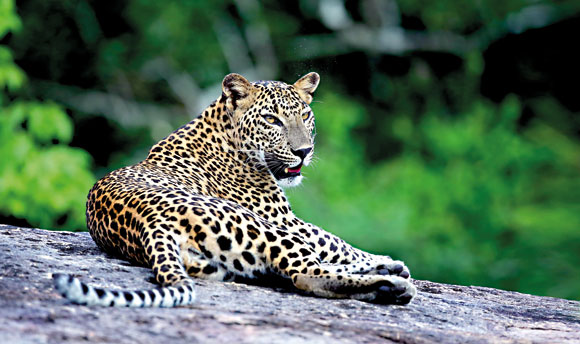Jun 16 2016.
views 1014The leopard - human conflict is a real issue, which is serious in rural communities living in the estate areas. A decrease in habitat and wild prey has increased the number of leopards’ intrusions in attacking domesticated animals. There have been quite a few leopard deaths being reported from the estate areas. It is a growing concern as the Leopard population in Sri Lanka has been decreasing rapidly.
Life Online spoke to Chitral Jayatileka who spearheads the ‘Project Leopard’ operation and is the vice president of the John Keells group about this issue.

What estate areas in Sri Lanka are affected?
Mostly all tea estates that are placed close to forest fringes. Leopards learn to live in small pockets of forests and they adopt living on small mammals. Some estates have abandoned forest patches inside in Gampola, Nawalapitiya, Hatton, Agrapathana, Lindula and Thalawa Kelle which has a spike of activity.
What methods are people in these areas using to kill leopards?
Snares, poisoning, using dogs to chase leopards up trees and attack them and shooting which is quite rare in the hills. Unfortunately at times in snares are set up for wild boars, leopards get entangled in them as a Non Targeted species.
Do the people living in these areas feel threatened by leopards?
It’s their perception, most people living in Colombo will also be terrified if a leopard is roaming their back gardens. The cats are looking for small mammals and dogs as food, and fortunately to-date, no intentional human attacks have taken place where we can look at a leopard as a man eater. It’s happening in main cities in India, we have been very lucky to avoid that predicament.
What measures are been taken to avoid leopard deaths in estates?
The Department of Wildlife Conservation (DWC) officials visits these areas and briefs the villagers, eliminating their fears, but it is inadequate and the negative trend seems to be growing.

What do you propose as the solution for leopards and humans to co-exist?
This is a very complicated issue with massive land extends. There will have to be a comprehensive national plan adopted by provincial councils to create awareness at schools and share basic knowledge on how to share land with these cats.
Further, the DWC and the corporate sector can undertake a short term action plan to enhance awareness at village level through schools, temples and community centers by launching an effective poster campaign.
The estate managements can also play a key role in controlling this conflict growing further.
The solutions which can be recommended to the hills may vary from the solutions best for the dry zone conditions. Hence regionally sensitive programs will need to be adopted.
What is 'Project Leopard' currently doing about this situation?
Project Leopard is designed to focus on the local issue around the western boundaries of Yala's block 1 where intense cattle farming was fueling a conflict between leopards and cattle owners. We have assisted 67 families to mitigate their losses and even erase any losses from leopard attacks and this has enhanced these villagers’ earnings and their quality of life. The project intends to extend this assistance towards 100 families by the end of the year.
According to you how helpful has the Sri Lanka Wildlife Society been? What measures have they taken to control this situation?
I have no connection to this society.
Apart from JKH what other organizations have partnered with 'Project Leopard'?
Locally, we have SML Frontier and the Sri Lanka office of Abercrombie & Kent partnering with ‘project leopard’ on a long term basis. We also have many overseas donors contributing towards its success.
How can we as a print media source help with this situation?
That's a very important area. The print media can help launch this awareness creating effort, especially through the Sinhala and Tamil print media aimed at rural villagers. Building an accurate understanding of how important this animal is to the eco system, and how one could share land and co-exist will be a key to achieving success, and the print and even electronic media can play an important role here.

By Jithendri Gomes
0 Comments